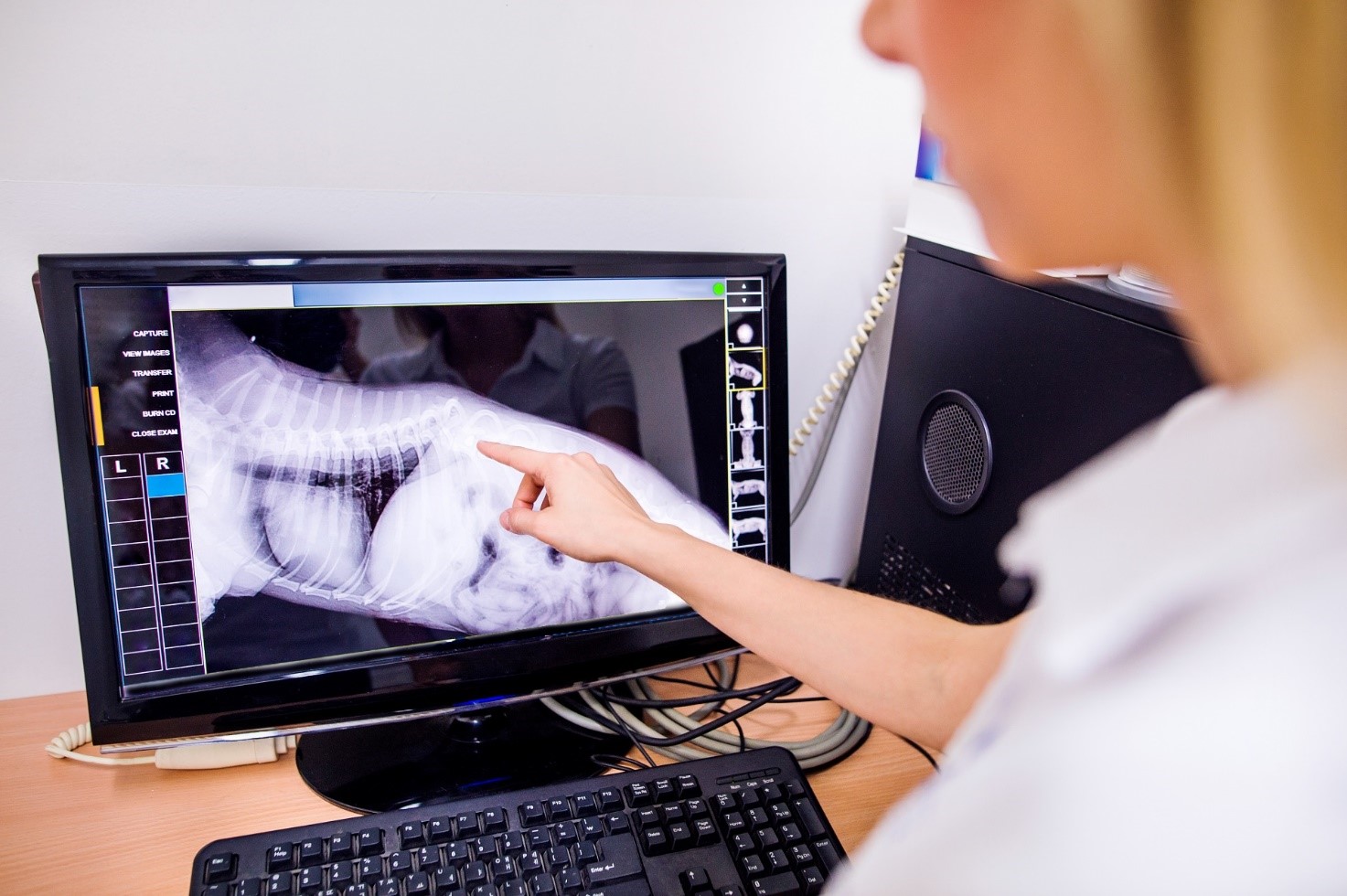Stereotactic radiosurgery
Stereotactic radiosurgery for pets
Stereotactic radiosurgery, also known as SRS, is a noninvasive, nonsurgical treatment in which high doses of precisely focused radiation are delivered to destroy the tumor.
The pet is treated with a high dose of radiation that destroys tumor cells with minimal damage to nearby healthy tissue. This advanced form of radiation therapy is delivered in just 1-3 treatments, representing an 80-95% reduction in both treatment sessions and anesthetic events compared to traditional forms of radiation therapy. While SRS is widely accepted and available for treating cancer in people, this advanced technology has not been nearly as accessible to pets with cancer.

PetXmarkTM guiding stereotactic radiosurgery
The traditional dogma in veterinary radiation therapy has held that SRS fractionation is not possible unless there is gross residual disease to target. In cases where patients have had their tumor resected down to microscopic residual disease, as in the case with most skin cancers, and where radiotherapy is considered necessary to achieve adequate local tumor control, the current recommendation would be to initiate a course of conventionally fractionated radiation therapy consisting of approx. 20 treatment fractions.
A study with 30 pet-patients has shown that PetXmark™ was safe and effective in guiding adjuvant stereotactic radiosurgery treatment of resected skin and subcutaneous cancers in dogs and cats. PetXmark™ was injected along the surgical incision and provided visibility of target in later medical imaging. Without PetXmark™ it would have been difficult to see the target and therefore not possible to provide the SRS treatment.
In total, PetXmarkTM has been implanted in 180 veterinary patients, see testimonial from Chief Medical Officer Neal Mauldin, PetCure Oncology.
References
1. Creation of Stereotactic Radiosurgery Target Volumes in Patients with Marginally Resected Tumors using Liquid Fiducial. Guy N. Mauldin PetCure Oncology, American College of Veterinary Internal Medicine (ACVIM) 2018.